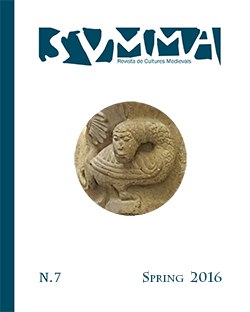Quomodo Scit Quod Mortuus Erat? Signs of Death in 15th-Century Italy
DOI:
https://doi.org/10.1344/Svmma2016.7.5Keywords:
Quattrocento, Italy, death, signs of deathAbstract
Fifteenth-century Italian hagiographic materials reveal several signs of death that were taken into account to confirm whether someone was dead or approaching death. The most frequently repeated signs are the coldness of body, changes in skin colour, and the lack of pulse or breathing. Unconsciousness, speechlessness, and immobility were also often noted.An in-depth analysis shows many other unexpected signs. Some signs on peoples’ eyes, teeth or tongue could also be proof of death. Sometimes even tears or sweat on the forehead were considered as deadly signs. For some people, the position adopted by a dying person signified death, for instance, lying on one’s back or with the head laid down, as was the custom for the dead. Similarly, wounds or pain told about the approaching death. The expressions like ‘waxen teeth’, ‘black tongue’, ‘dead lips’, and ‘sweat and tears of death’ show that people looked for signs that are not associated with death today.
Downloads
Published
2016-06-21
Issue
Section
Articles
License
Copyright (c) 2016 Jyrki Nissi

This work is licensed under a Creative Commons Attribution-NonCommercial-NoDerivatives 4.0 International License.
The authors retain rights and grant the journal right of first publication of the work.
The author (s) to retain the publishing rights without restrictions, only recognition of first publication.
SVMMA Revista de Cultures Medievals is licensed under a Creative Commons Attribution-NonCommercial-ShareAlike 3.0 Spain License















